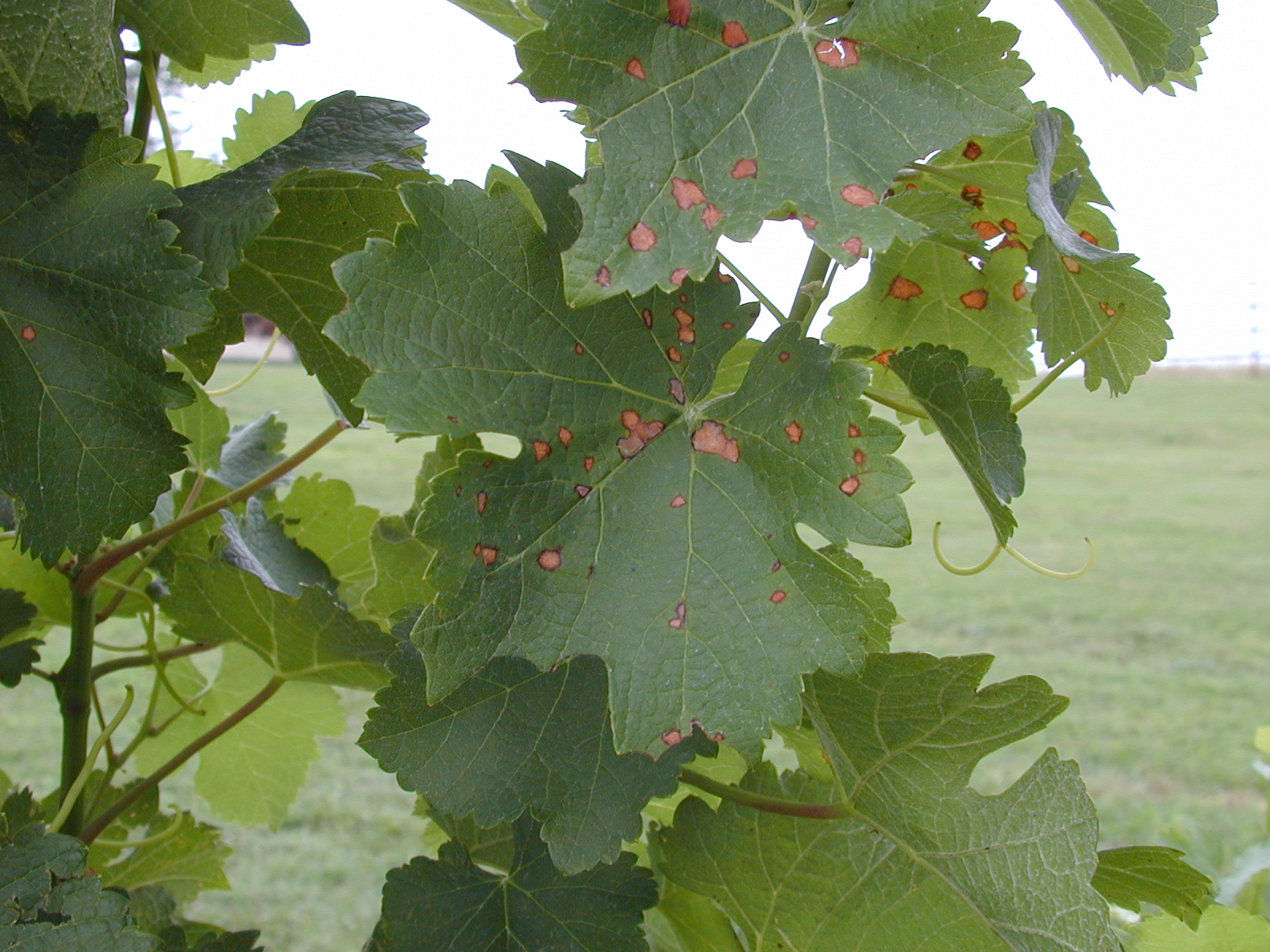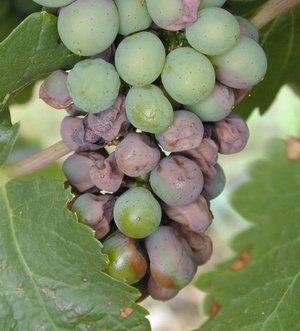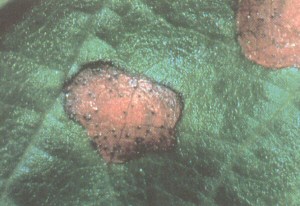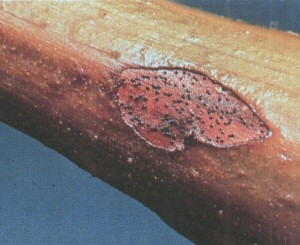Black Rot of Grapes
 Causal Agent
Causal Agent
Guignardia bidwellii
Hosts
Black rot, a foliar and fruit disease of grapes, is considered to be the most serious disease of grapes in all areas where it occurs, including Oklahoma.
Symptoms

 Infection spots (lesions) usually do not appear on fruits until after they are half
grown. The first symptom is the appearance of very small whitish areas on developing
green fruit. These are soon surrounded by a rapidly widening brown ring, giving a
bird’s eye effect. As the fruit rots, black sexual fruiting bodies, perithecia, begin
to form. Later, the rotted fruits become black, perithecia studded mummies (Fig. 4).
Mummies are easily dislodged but some may remain
Infection spots (lesions) usually do not appear on fruits until after they are half
grown. The first symptom is the appearance of very small whitish areas on developing
green fruit. These are soon surrounded by a rapidly widening brown ring, giving a
bird’s eye effect. As the fruit rots, black sexual fruiting bodies, perithecia, begin
to form. Later, the rotted fruits become black, perithecia studded mummies (Fig. 4).
Mummies are easily dislodged but some may remain  attached through the winter. After spring rains thoroughly soak the mummies, spore-bearing
bodies (asci) in the perithecia forcibly release ascospores. Air movements carry ascospores
to developing plant parts, which they infect under wet conditions. Some ascospores
are also released during the summer when heavy rains occur and also infect tissues.
Thus, there can be a continuous primary infection of tissues. The greatest numbers
of infections, however, occur during the spring.
attached through the winter. After spring rains thoroughly soak the mummies, spore-bearing
bodies (asci) in the perithecia forcibly release ascospores. Air movements carry ascospores
to developing plant parts, which they infect under wet conditions. Some ascospores
are also released during the summer when heavy rains occur and also infect tissues.
Thus, there can be a continuous primary infection of tissues. The greatest numbers
of infections, however, occur during the spring.
Control
Sanitation and Cultural Practices - Pruning of vines removes much infected tissue, but the pruning action causes old fruit mummies to fall to the ground, thus providing them an advantageous environment to become wetted for long periods, thus aiding spore production. Cultivation which throws soil over the mummies prevents release of spores. Weed control and proper pruning provide good air circulation, thus keeping foliage dry and protected from fungus infection.
Resistant Cultivars (Varieties) - Many grape cultivars have some resistance but still require a few applications of recommended fungicide sprays during wet periods. Cultivars that have large fruits or mature early in the season are the most susceptible.
Please contact your local county extension office for current information.
